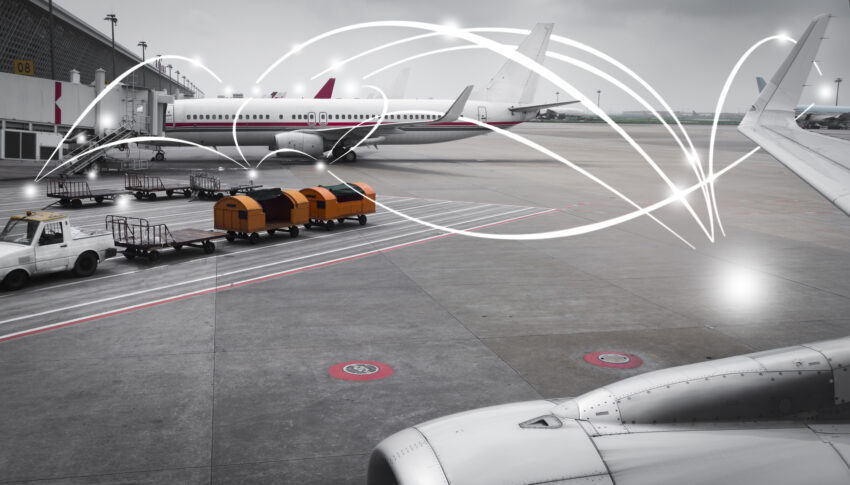Aircraft nowadays create far more data than the previous generation, so airlines have the opportunity to extract intelligence that can be used to better manage flight operations. Bernie Baldwin learns more from one of the industry’s major players, GE Aerospace.
If the property business is defined by ‘location, location, location’, the equivalent idiom for the running of a modern airline is arguably, ‘data, data, data’. Almost nothing in the operation is done without reference to intelligence drawn from data.
That fact applies particularly to flight operations, where modern aircraft now provide data points in their millions or even tens of millions, far more than ever before. Airlines therefore have the opportunity to extract intelligence from that data which can be used to operate flights more efficiently. Within the aforementioned areas of use, demand for flight data analysis can range considerably.
Unsurprisingly, given the amount of data emanating from engine monitoring, GE Aerospace is recognised as a market leader in data analysis. The company can attest to the variety of industry requests for analytical assistance.
“We get a wide range requests from customers, and [sister company] GE Digital has developed aviation software that focuses on many of these categories, covered by GE’s Flight Analytics software which focuses on fuel efficiency, safety insights, maintenance and operational insights for pilots,” explains a company spokesperson. “During the pandemic, customers responded to the industry downturn by doing what they could to save money. That spurred interests in these extra efficiencies.”
According to the spokesperson, one emerging trend from customers is the increasing use of data to unearth more predictive maintenance solutions. “GE Aerospace Customer Support provides 24/7 service to all our GE and CFM customers, more than 30,000, from large airlines to single operators. Each year, we monitor 40,000+ engines which stream more than 120 million flight records which we process in real-time in our analytics system and provide 18,000 customer notification reports to identify issues we see with an engine and, very importantly, what we believe is the cause and specific recommendations for the operator to take.
“In addition, we answer more than 67,000 technical enquiries annually from around the world, of which 4,000 are AOG which means a flight is imminent in the next 12 hours,” the spokesperson continues. “We reply to more than 90% of those in less than 4 hours, getting passengers on their way and minimising disruption, a critical need for all airline customers.”
The GE Aerospace team is global, with main centres in Cincinnati in USA, Shanghai in China, and Bangalore in India, supported by regional offices in London, Dubai and Singapore. When it comes to engine maintenance, this has traditionally been carefully planned, set out in the Aircraft Maintenance Manual (AMM) and defined based on conservative limits from design and testing.
“One of the measures we use to determine the value of analytics is the ‘Effectiveness’. Did the analytic correctly identify the problem, and was it resolved when the recommended maintenance action was taken? Ten years ago, the Effectiveness was around 60%,” the spokesperson elaborates. “From that experience we have learnt that you need a foundation of three essential elements in order for Analytics Based Maintenance to deliver value.
“First you need to have very strong domain expertise, to understand in detail the design of the engine, the physical design limits, margins and controls. Secondly, you need to combine that with a strong portfolio of analytics, leveraging the full spectrum of analytic capability from the physics-based models to data science models.”
For GE Aerospace, these different types of analytics are complementary, each having their own advantages. One type is not considered better than another, rather both are used together to get more meaningful outputs.
“Thirdly,” the spokesperson adds, “you need to have a large data set, building on the test data and covering not only the greatest number of engines, but also widest range of operating conditions, and events from the global customer base. This includes configuration data, utilisation data, and shop visit inspection data.
“In GE Aerospace, we have all three foundational elements, in our expert engineering teams and our range of analytics, which for CFM LEAP is now processing more than 75 times the data compared with our older CF6 engines, and our data set which is the largest and most complete of anybody in this industry. The result of our experience with these three essential elements are analytics that today are now more than 85% effective, up from 60% just ten years ago,” the spokesperson emphasises.

Of course, no matter how much data comes off aircraft, it is worth little without being assessed and/or processed so that useful intelligence is drawn from it for use by different airline departments. The GE Aerospace spokesperson provides an overview of the raw data to decision-making pathway that its products produce.
“Data comes from multiple sources. A significant portion comes from sensor data on aircraft. We also have data sharing agreements with airline customers to capture other data from operations, such as borescope images and video. To accompany this sensor and operational information, GE also tracks data on wear and tear, from on-wing borescope inspections and from our overhaul and repair shops of the maintenance work performed to return an engine to service.
“All this information is curated in our cloud-based infrastructure, bringing different data sets together which provides appropriate employees with access to perform various types of analysis. This leads to better work scope and fleet planning with customers through slot management,” the spokesperson explains.
There is a variety of sharing agreements in which the company has participated, including a collaboration in 2016 with Qantas on FlightPulse, a flight analytics tool that helps pilots analyse data after each flight and reduce the amount of fuel burned. This type of collaboration is also happening in the business jet arena, where GE Digital has teamed up with both Gulfstream and Bombardier.
In 2021, GE Digital formed an alliance with Airbus and Delta TechOps for fleet health monitoring and diagnostics solutions. The alliance is focused on providing cost savings, network efficiencies and increased fleet availability to 140 commercial aviation operators worldwide already engaged with Airbus’s Skywise Core product.
Last year, GE Digital and Qantas paired up again with Airspace Insight, a data-driven collaboration with air traffic agencies that helps airlines to burn less fuel, emit less carbon, and travel fewer miles through better routings.
Streamlining aircraft operations and making them more efficient through flight data analysis is exactly what airlines seek. On being approached to assist with the process, GE Aerospace begins by discussing priorities to meet any organisational goals of the customer, followed by going through an action plan.
“We recognise that each situation is unique and we want to allow the operator to make the best-informed decision possible every time. To do that, we not only provide the right data to their fingertips, but also connect with our experts so that they can discuss options,” says the company’s spokesperson. “This would include thoroughly going through how products can impact organisational goals and inform decisions.
“For example, if engine monitoring is a priority, GE Aerospace’s engine health monitoring service includes self-serve access to GE’s customer web portals, where customers can find technical updates, and analysis of key engine performance trends and more. Customer Notification Reports (CNRs) are issued to GE Aerospace customers to identify potential engine issues with recommended maintenance actions. Additionally, customers receive 24/7 global support for Aircraft on Ground (AOG) situations,” explains the spokesperson.
Those reports are, of course, products of the process begun with monitoring and data downloads. With the data now processed, they provide the intelligence to help the airline customer improve its performance, delivering better service to the travelling passenger, whatever ‘location, location, location’ to which they travel.
Author: Bernie Baldwin
Published 11th April 2023
Article image courtesy of GE Fleet




